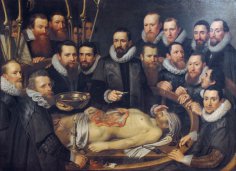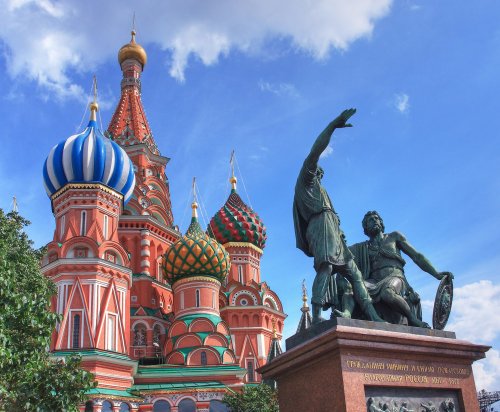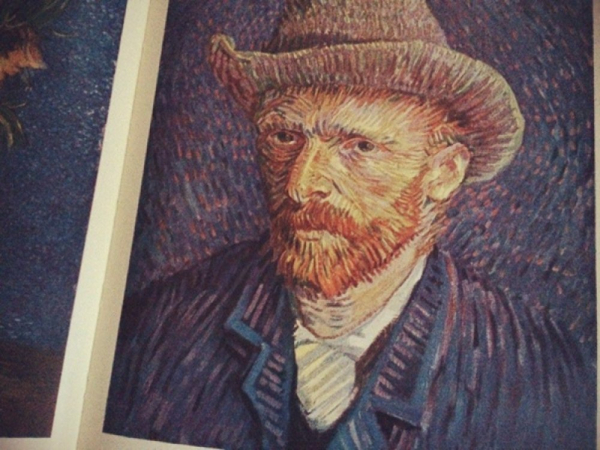
Fate was cruel, allowing the artist only 10 years of active creative life, but even this short period was enough for Vincent van Gogh to develop into a distinctive master with an original style. Unfortunately, his recognition as one of the most famous Dutch painters occurred many years after his tragic death.
Vincent van Gogh was born on March 30, 1853, in the small village of Groot-Zundert in the southern Netherlands, the son of a Protestant pastor. From childhood, the boy was known for his difficult personality; the artist later recalled, “My childhood was gloomy, cold, and empty.” His parents tried to provide their children (there were two sons and three daughters in the family besides Vincent) with a good education. For a time, Vincent and his sister were cared for by a specially hired governess. The boy was then sent to boarding school, which he left in 1868, despite showing progress in certain subjects, including foreign languages.
The future artist developed a passion for drawing while still in school, but he never imagined that painting would become his calling. In 1869, he began working for a large art dealership. It was during this period that he enthusiastically visited museums and art galleries, studied the work of many artists, developed an understanding of painting, and met both emerging and established artists.
For a time, Vincent van Gogh's dealership not only captivated him but also provided a decent income. But in the mid-1970s, he practically abandoned the business and became fascinated with religion. Naturally, he was fired from the firm. Vincent began a period of searching for his life's direction. He tried his hand at teaching, briefly served as an assistant pastor, preached, did missionary work in a mining region in southern Belgium, and even seriously prepared to enroll in the theology department at the University of Amsterdam.
Around 1880, Vincent van Gogh decided to devote his life to painting and become a professional artist. Realizing that school drawing courses were insufficient, he began attending classes at the Academy of Fine Arts in Brussels. He took lessons from the artist Anton Mauve, a distant relative, and spent much of his time self-taught, trying his hand at oil painting, trying to find his own artistic style.
Curiously, almost immediately he began producing not only landscapes and sketches, but also genre paintings depicting the lives of ordinary people—miners, peasants, weavers, laborers, and the urban poor. Works from this period are typically painted in dark tones, emphasizing the bleak and difficult lives of those depicted.
The painting “The Potato Eaters,” which the artist presented to the public, is considered his best work of this period. Unfortunately, critical reviews were mostly negative, at best neutral. Naturally, the artist was distressed by this relative setback, but he didn't give up and instead worked even harder.
A new period in his creative life began in late 1885. Vincent first went to Antwerp for several months, where he addressed the shortcomings of his portraiture by attending classes at the Academy of Fine Arts. He then went to Paris for two years, where he continued his training in the studio of the talented French artist Fernand Cormon, while simultaneously experimenting with color, form, and painting technique.
The Paris period is also interesting because during this time, Van Gogh painted nearly 30 self-portraits. This wasn't a display of self-admiration; the artist simply lacked the money to hire models, so he had to paint himself. The artistic life of Paris, where Impressionism was gaining momentum during these years, captivated the young artist. He became acquainted with young painters, like him, who were exploring new paths in painting. Perhaps his closest associations during this period were with Henri Toulouse-Lautrec and Paul Signac.
Not without the influence of new acquaintances and under the influence of Impressionism, the artist's color palette changed dramatically. Rich, vibrant colors now predominate. But the public showed little interest in Vincent van Gogh's work. If he heard positive reviews of his paintings, it was only from fellow artists and a few friends.
Having failed to gain recognition in Paris, Vincent left for the south of France in February 1888, to the small town of Arles, located on the banks of the Rhone River. Here, landscapes became the artist's primary focus, as the vibrant southern landscape proved so resonant with his work.
Vincent strives to create a colony of like-minded artists in Arles. He even furnishes a house for this purpose, decorating its rooms with his works, including his later famous still lifes of sunflowers. Van Gogh stays with him for a time, but several quarrels break out between the artists. During one of them, Vincent even cuts off his own earlobe in a rage.
Unfortunately, in Arles, instead of the peace of mind he so desperately needed, the artist suffered a persistent mental disorder and was even hospitalized. His depression was compounded by epilepsy, which doctors diagnosed. In April 1889, his attacks worsened, and Vincent van Gogh agreed to continue treatment at the Saint-Rémy mental hospital. Even here, he continued to work, translating his surroundings onto canvas and paper, studying engravings and reproductions of old masters, and copying their paintings, but in his own distinctive style. In between bouts of illness, when he was able to work outside the hospital, Vincent painted wonderful, light-filled landscapes.
In May 1890, Vincent van Gogh moved to the village of Auvers-sur-Oise, located near Paris, a favorite among artists. His illness seemed to have eased, and he worked prolifically, admiring the local landscape. In a letter to his brother Theo, he enthusiastically wrote: “This place is of astonishing beauty, a real village with unique features and very picturesque.”
Everything seemed to be going well: the artist was working hard and enthusiastically, and the public was finally beginning to show at least some interest in his paintings. But his illness persisted. In a moment of depression, Vincent van Gogh decided to commit suicide, so as not to be a burden to his family and his brother Theo, who had supported him in every way. On July 27, 1890, the artist shot himself in the chest with a revolver. The wound proved fatal, and two days later, Vincent, only thirty-seven years old, died in the arms of his brother Theo. Vincent van Gogh was buried in the local cemetery. Later, his beloved brother Theo, who outlived Vincent by only six months, was reburied next to him.
After the artist's death, Theo took on the care of his artistic legacy. He decided to organize exhibitions of his brother's work and promote his work in every possible way. Unfortunately, he accomplished virtually nothing. After Theo's death, his widow, Johanna, assumed the care of Vincent van Gogh's artistic legacy. The rest of the artist's relatives showed no interest in the artist's work and gave virtually all of Vincent's works to Johanna.
It was thanks to Joanna that Vincent van Gogh's works were exhibited worldwide, and his letters and albums of reproductions were published. Interest in the artist's work grew rapidly. Joanna ensured that by the time of her death in 1925, Vincent was already extremely popular.
After the end of World War II, the Dutch authorities finally took an interest in the work of their famous compatriot. A large number of Vincent van Gogh's works were purchased from the artist's heirs and collectors. It was decided to create a large museum dedicated to the artist in Amsterdam. Its construction began in 1963, with the direct participation of the artist's nephew, Johanna's son, who became an engineer.
The Vincent van Gogh Museum in Amsterdam opened in 1973, but its construction wasn't completed until 1999, when the exhibition complex was added. It now houses the artist's largest collection—over 200 paintings, over 500 drawings, and approximately 700 letters. Works by many famous artists—contemporaries of van Gogh—are also on display, and a large hall is dedicated to prints.
On weekdays, the museum is open from 10:00 AM to 6:00 PM, and on Fridays, its hours are extended until 10:00 PM. The Vincent van Gogh Museum has long been extremely popular, with queues almost always forming.
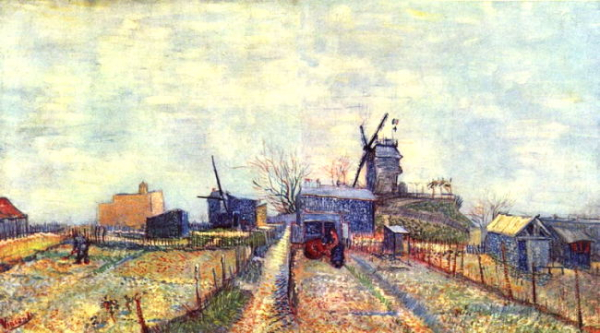
Vincent van Gogh. Vegetable Gardens in Montmartre
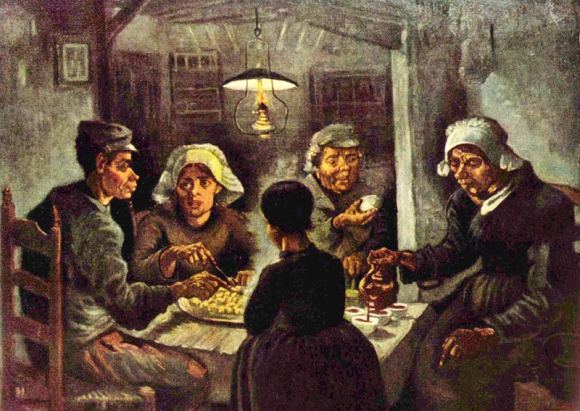
Vincent van Gogh. The Potato Eaters
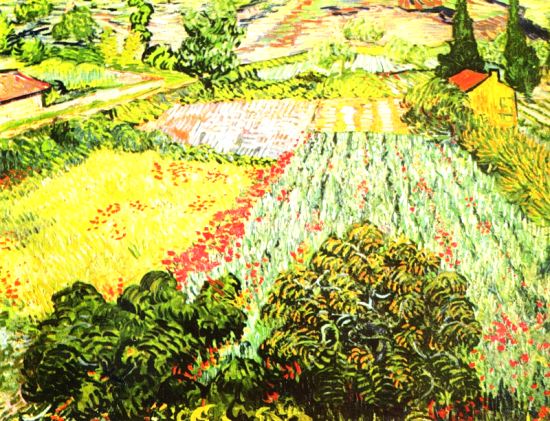
Vincent van Gogh. Poppy Field
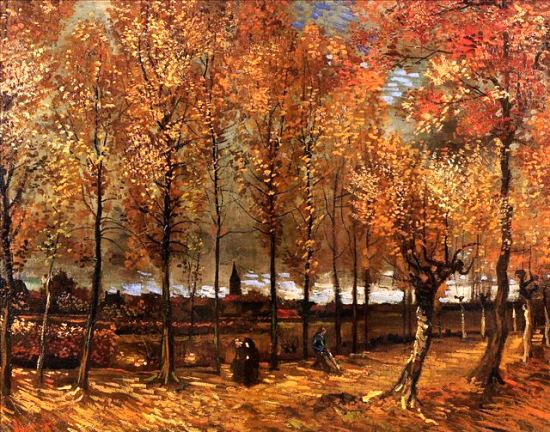
Vincent van Gogh. Path with Poplars
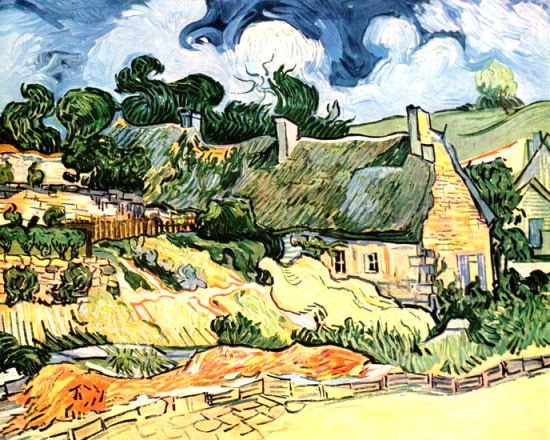
Vincent van Gogh. Cabins at Cordeville


